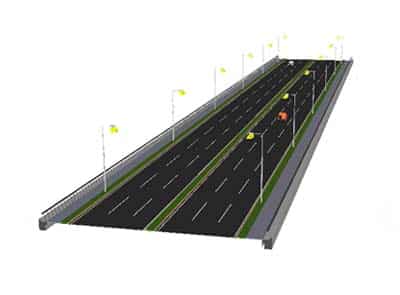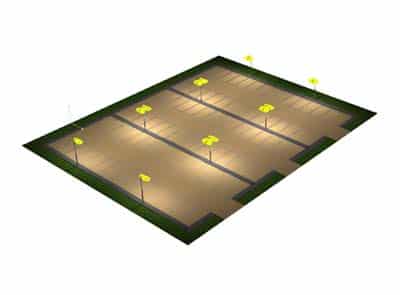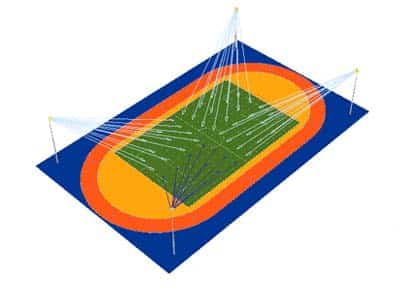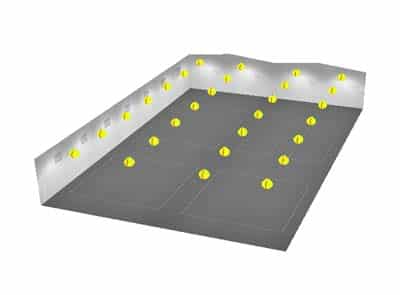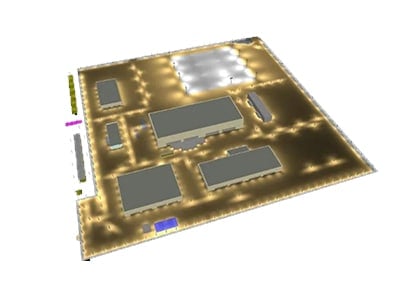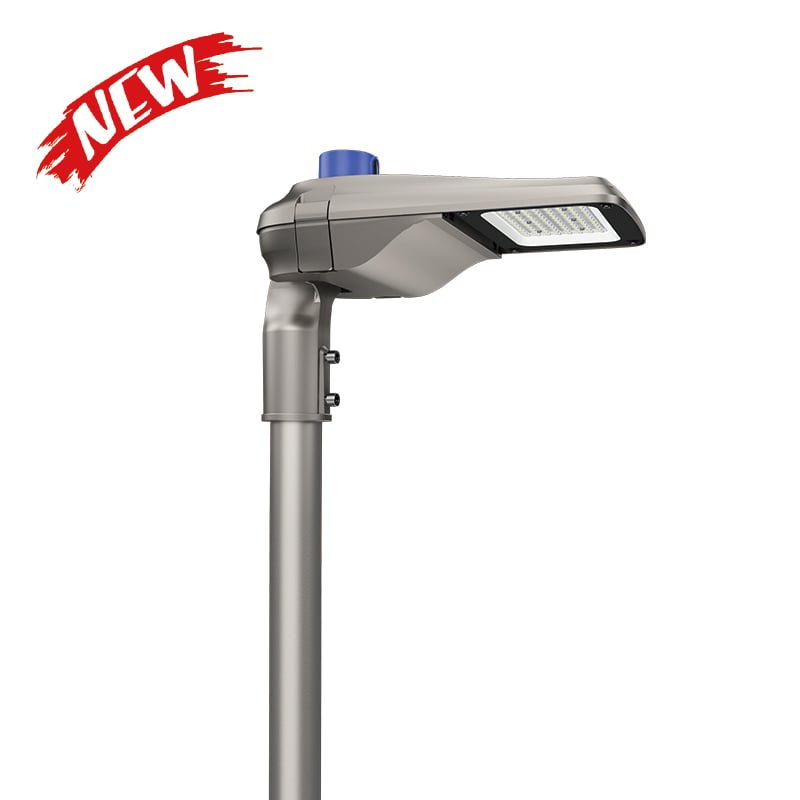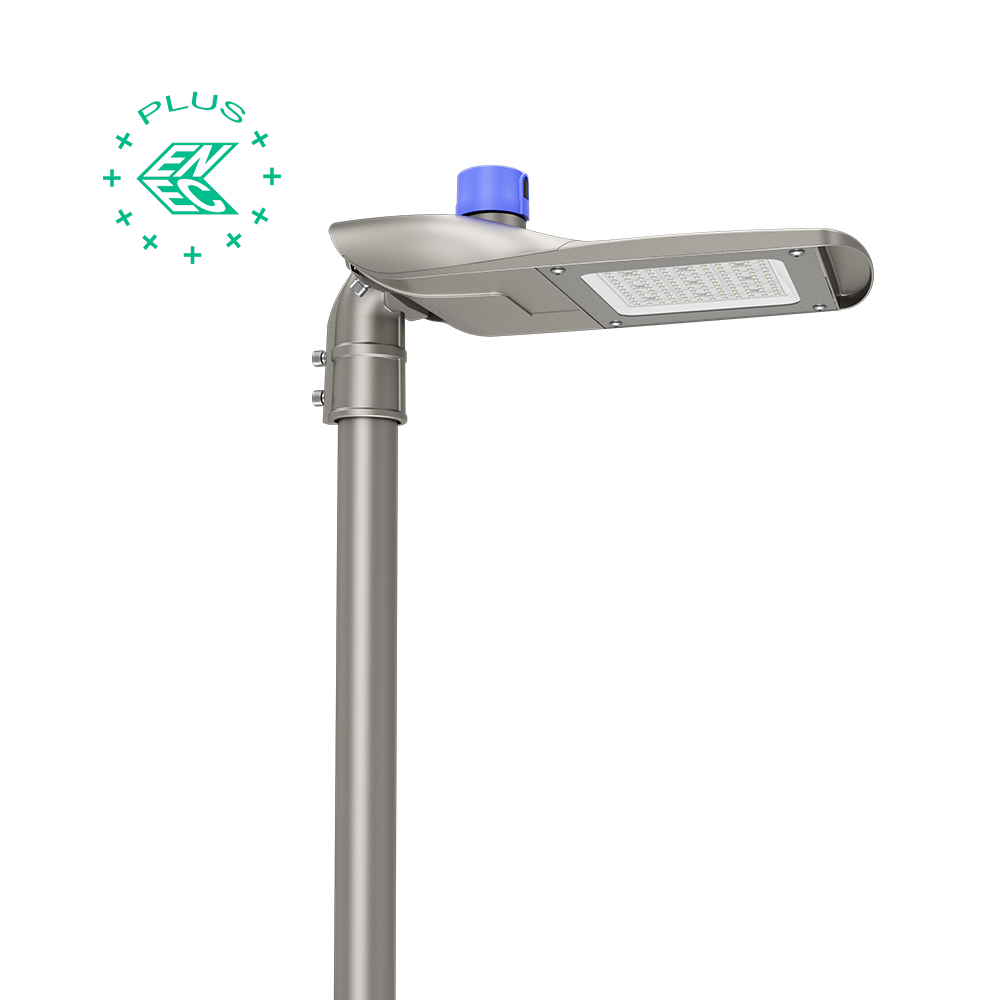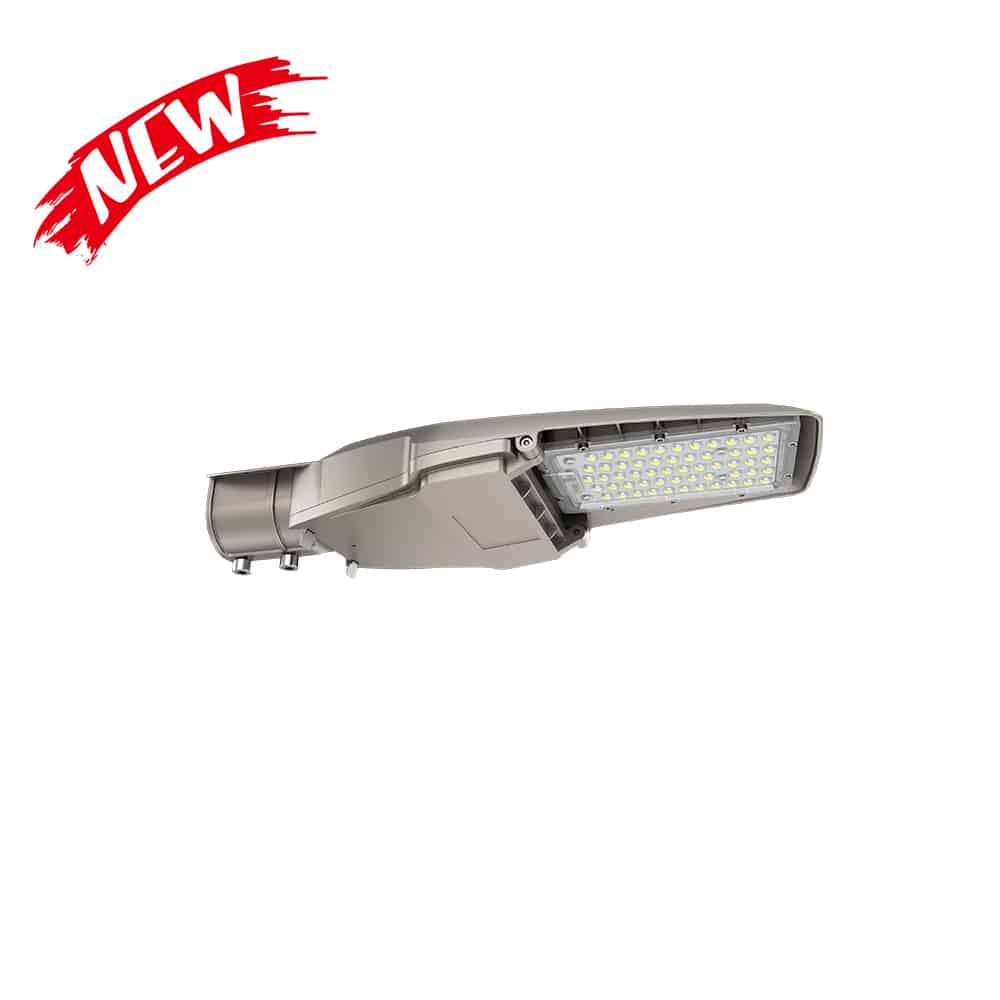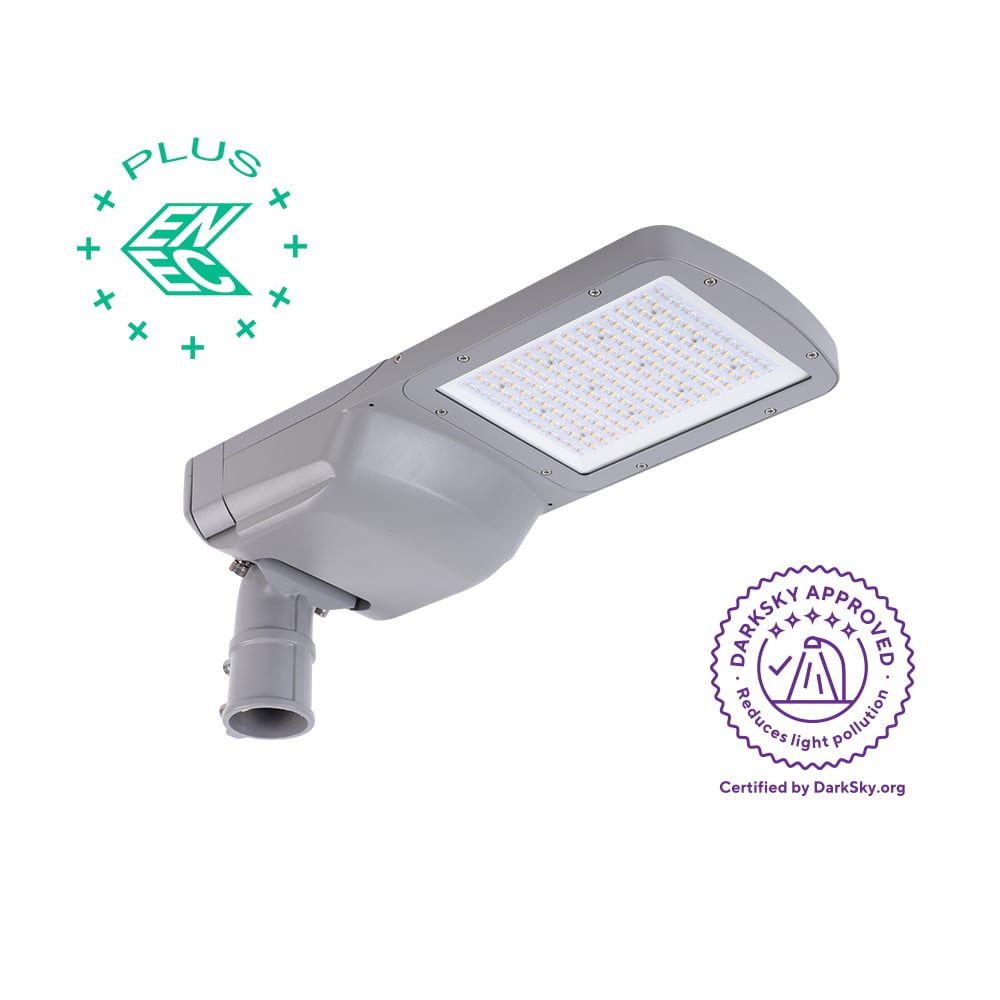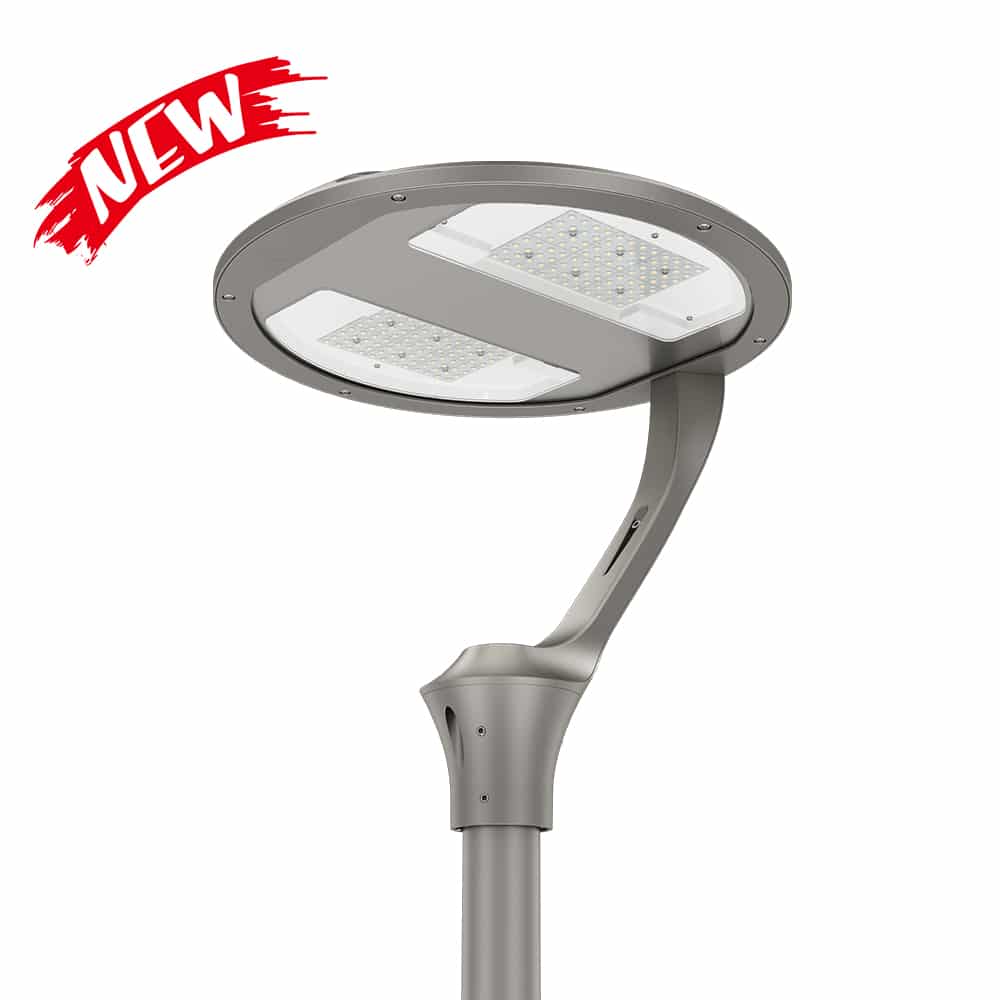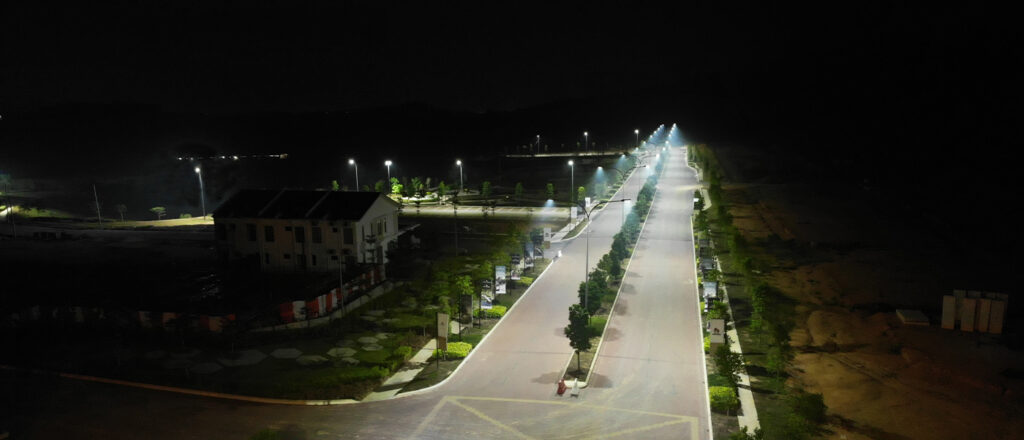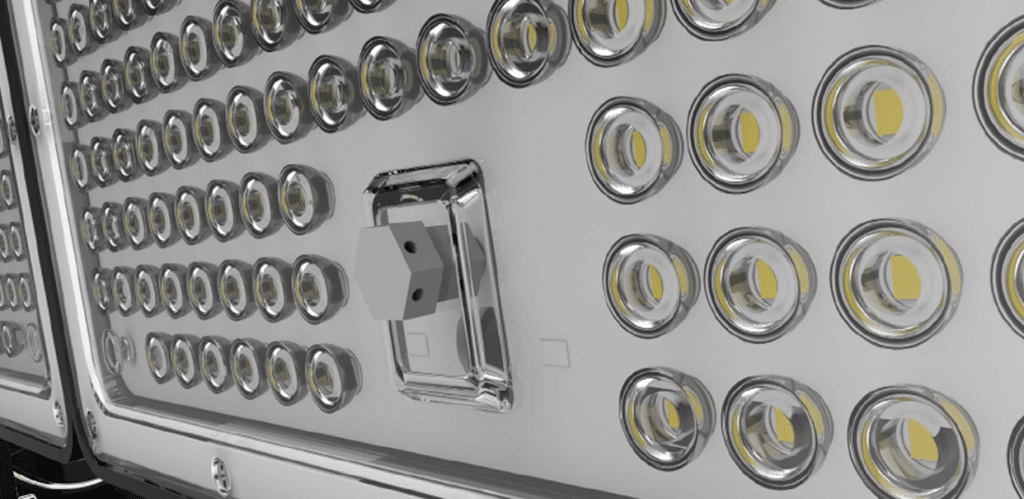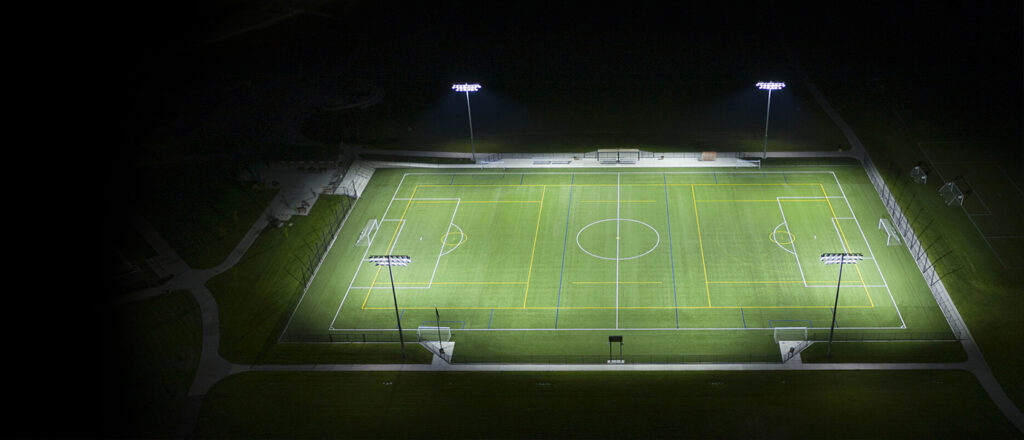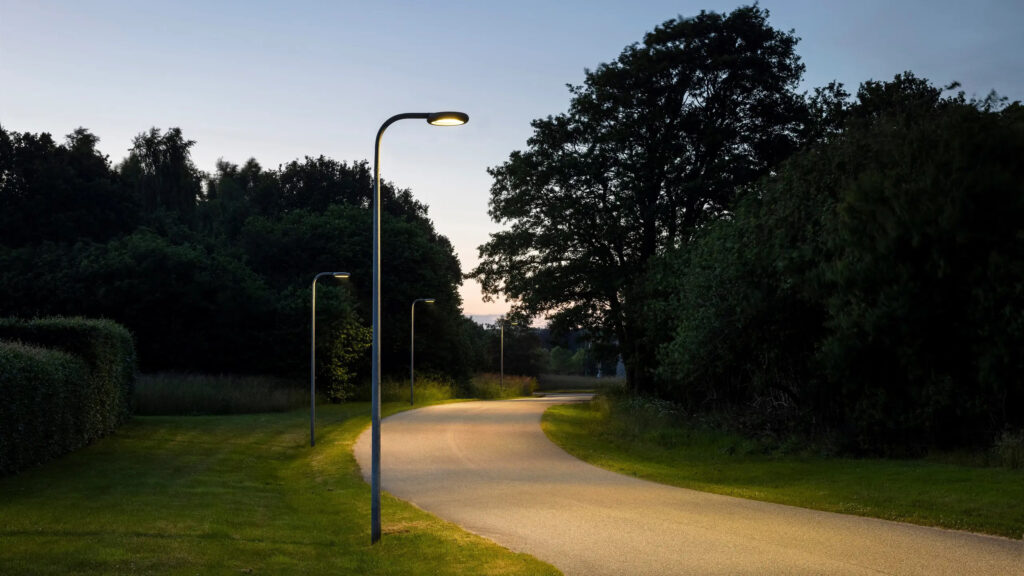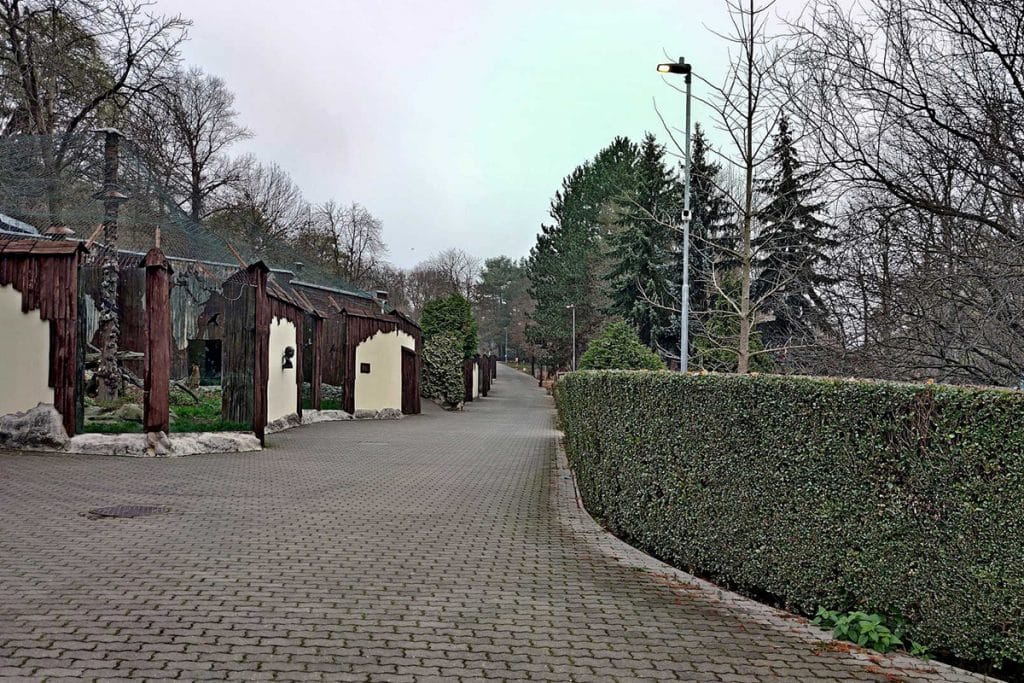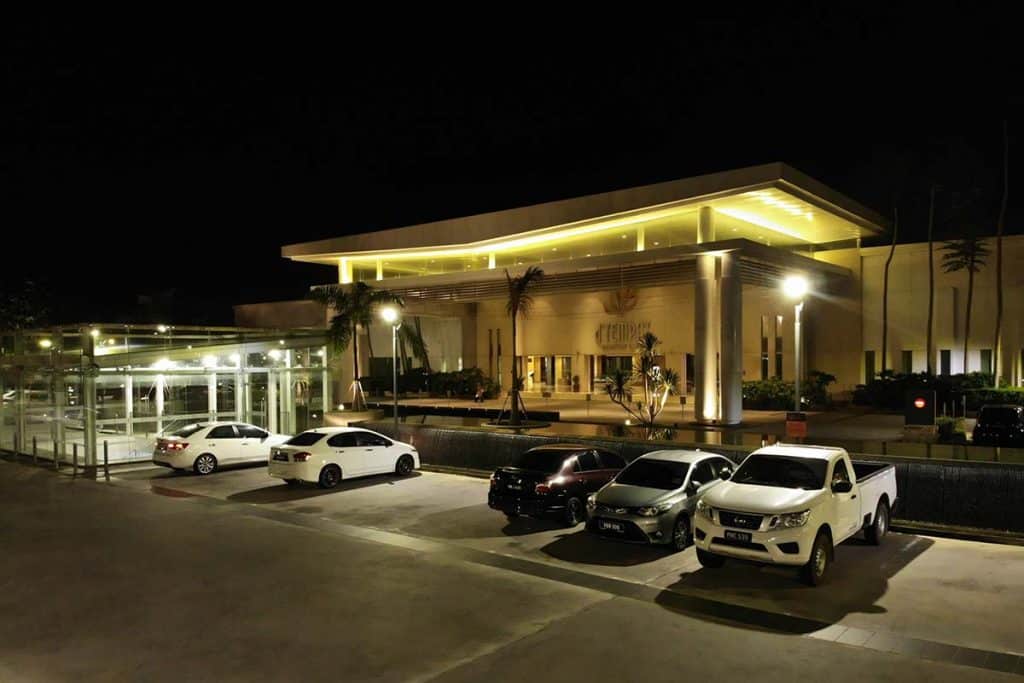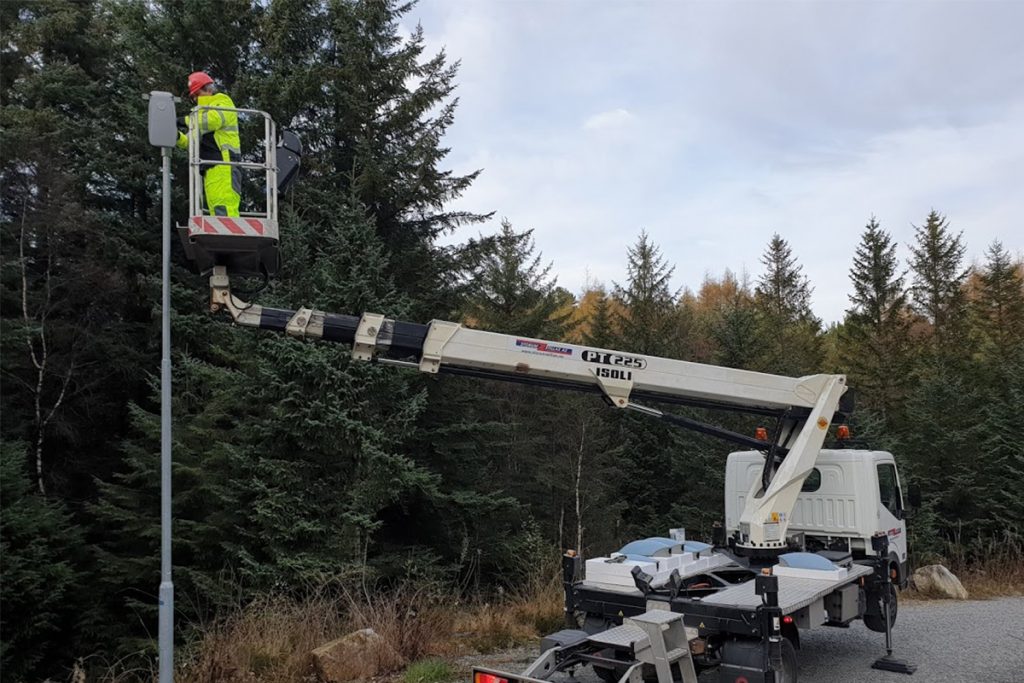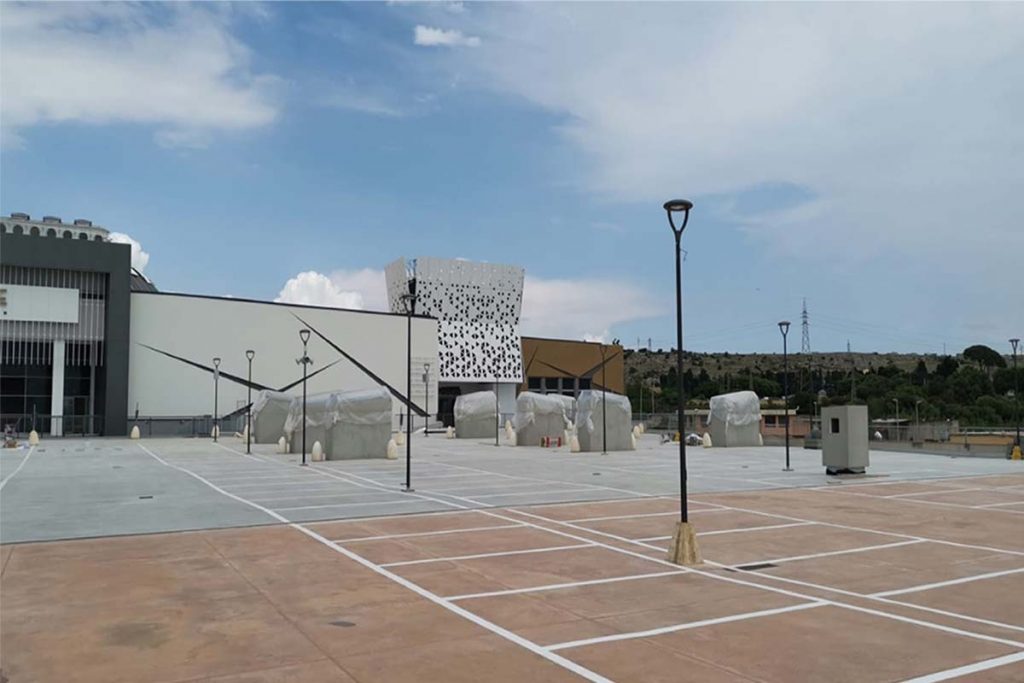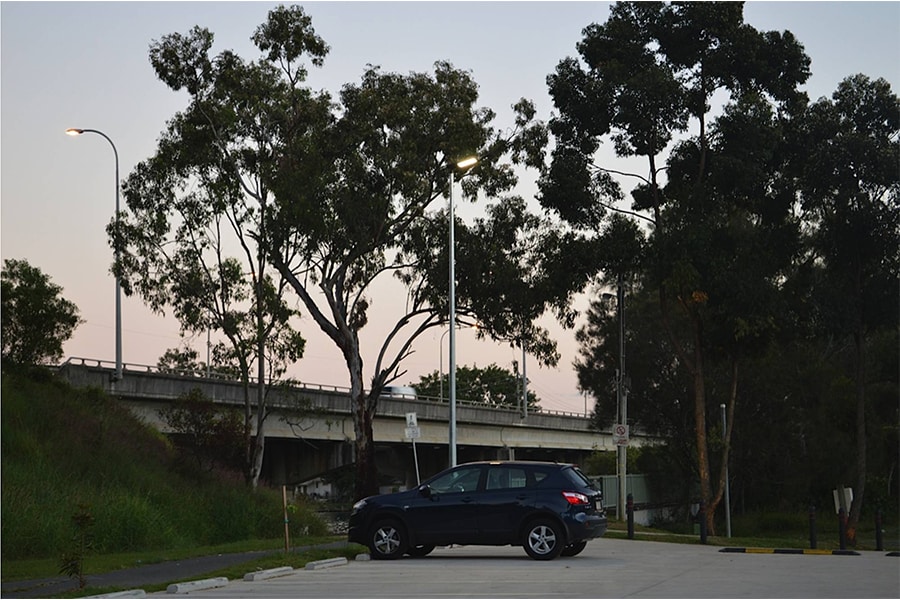How tall are street lamps or what factors decide height of street lights?
How tall are street lamps or what factors decide height of street lights?
Introduction
The height of the lamppost (height of street light) plays a crucial role in the effectiveness of the lighting installation. It determines how far the light can travel and how evenly it is distributed within a specific area. Generally, a lamppost that is too low cannot provide sufficient illumination for target areas distant from the luminaire, resulting in dark zones (uneven lighting). Conversely, while taller poles can illuminate larger areas, excessive height may result in insufficient illuminance/brightness within the target zone. Such lighting arrangements are substandard and may even create hazardous conditions. The height of street lights is also related to the wattage of the luminaires; generally, higher wattage requires greater pole height (installation height). Naturally, this is further influenced by factors such as the illuminated area (road width), pole spacing, and lighting standards (More about street lighting standard). Furthermore, the appropriate height varies significantly across different applications, such as expressways, rural roads, pedestrian streets, and parking lots. ZGSM maintains that the optimal height of street light should ensure the luminaire adequately covers the required illumination area, while also considering cost and other environmental factors. Now let us proceed to the main text to explore further details regarding the height of street lights.
Why cares about the height of street light?
Compliant with road lighting standards
There are specific standards for road lighting, such as EN13201 and RP-8-22, covering key parameters such as road surface brightness, uniformity (no noticeable differences in brightness), and glare. Height of street lights is a key variable in meeting these standards. For example, if a streetlight is installed too low, light will be concentrated directly below the lamp, resulting in bright light below the lamp and relatively dark in surrounding areas, which is called uneven lighting. If a streetlight is installed too high, light will be excessively dispersed, with a large amount of light directed to the periphery of the road (such as lawns and surrounding buildings). This will inevitably lead to light pollution (What’s light pollution and how to reduce it?) and low road brightness/illuminance.
Reasonable lighting coverage area
The height of street lights influences the geometry of the illumination range to a certain extent. Ideally, the shape (or spot shape which refers to the light distribution) should match the geometry of the road or site, but this is difficult to achieve in practice. For example, in residential lanes, sidewalks, or rural roads, which are narrow, the appropriate light pole height should be lower to avoid shining light into residents’ windows or green belts. Conversely, on some main roads, expressways, or conflict areas, where the roads are wider, taller light poles are more suitable, as shorter ones cannot cover such a large area. Otherwise, we would need to increase the number of light poles (installed on opposite sides) to cover the required illumination area.
Consider the price of light pole
Changes in pole height of street light also significantly impact construction costs. If the pole is too tall, higher wattage lamps are often required to compensate for light loss due to the increased distance traveled and ensure that the lighting meets standards. Furthermore, the costs of materials, production, and transportation for taller poles also increase, making the “tall pole + high wattage” combination uneconomical. Furthermore, excessively tall poles increase machinery costs during installation and increase the difficulty and expense of subsequent maintenance (such as lamp replacement and electrical inspections). An optimized solution often chooses a moderate height of street lights, avoiding the costs associated with excessively high poles while also eliminating the need to increase lamp wattage to cover unnecessary areas – effectively killing two birds with one stone.
Wattage vs height of street light
Generally speaking, the higher height of street light, the higher the wattage required. This is because taller poles provide a wider light coverage area, necessitating an appropriate increase in wattage to meet lighting requirements. While there’s no inherent correlation between streetlight height and wattage (Watts vs lumens), conventional wisdom still links the two. For example, on an 8-meter pole, to meet M3 and M4 lighting levels, the wattage of the former’s lamps would need to be increased. Generally, For 20-30w street lights, they are suitable for pole height 5m-6m (5m suitable for road width 6-8m for M4 lighting classes, 6m suitable for road width 8-10m, 2 lanes); For 30-50w, they are suitable for pole height 6m-7m (suitable for road width 7-8m, 2 lanes); For 50-80w street lights, they are suitable for pole height 7m-8m (suitable for road width 8-10m, 2-3 lanes). For M4 lighting category (medium traffic flow), we recommend the wattage and pole height (height of street light) as shown in the figure below.

However, this result may vary depending on different road conditions. Luminaire arrangement of street lighting, pole distance from the roadway (setback), boom length (arm), overhang, boom tilt angle and pole to pole distance (spaces) all affect the above results. For more details about these, please refer to our blog luminaire arrangement. If the lighting level (luminance) changes, we can proportionally convert the brightness requirements of different lighting classes. Of course, differences in uniformity, glare and SR requirements may require you to re-select the light distribution through lighting simulation in some cases. For lighting design, please check our blogs – Street lighting design by Dialux EVO.
Lighting applications vs height of street light
The height of street lights is also related to their applications, with scenarios including standard street lamps, motorway lamps, courtyard lamps, and car park lamps. Typically, the standard height of these lamp posts ranges from 3 to 12 metres (10 feet to 40 feet). Here only LED streetlights are considered. For other types (such as energy-saving lamps, high-pressure sodium lamps, and metal halide lamps), the pole height is often greater. This is because their light distribution is less efficient, requiring greater height to adequately illuminate the coverage area. Furthermore, certain special applications on roads—such as crossroads lighting, ramps, and conflict zones—also necessitate appropriately increased pole heights to provide sufficient illumination for these larger areas.
Height of street lights in residential areas
The streetlights or urban lights (More about ZGSM urban lights) in a residential area actually have two purposes: one is lighting, and the other is decoration. The main roads in the residential area are often dotted with 3-4 meter lamp poles, which are mostly equipped with vintage garden lights. We can enjoy the sense of security and comfort brought by streetlights. At night, lamp poles of this height combined with reasonable light distribution can well cover the roads in the residential area, while preventing strong light from entering the room. During the day, they can add a touch of beauty to the residential area. If the height of the street light is too high, the light emitted by the lamp will often be blocked by trees. At the same time, if the streetlight is installed too high, the light will also shine on the lawn and the buildings on both sides. Therefore, a height of 3-4 meters (10-15 feet) is reasonable, which is enough to illuminate the narrower roads in the residential area.
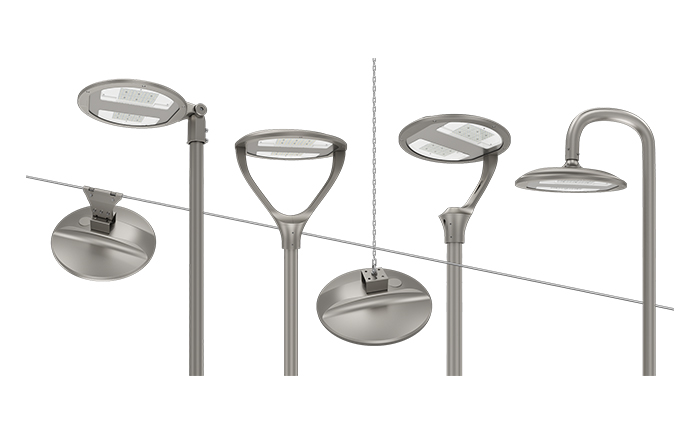
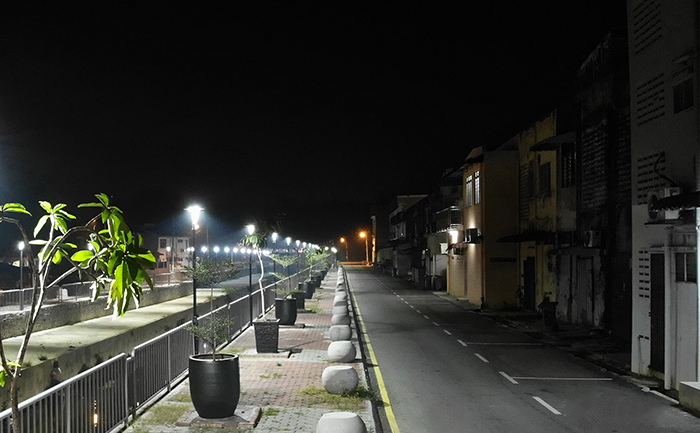
Height of street lights in highways and major roads
Streetlights on urban main roads and expressways are typically taller because these roads have multiple lanes, and only taller poles can illuminate multiple lanes. When height of street light is higher, the spacing between poles can be increased, which also helps reduce pole costs. Furthermore, higher-mounted streetlights can also reduce glare to a certain extent, which is beneficial for drivers traveling at high speeds. For this application, the pole height on the road can generally be 8-12 meters, but can be lower for double-sided lighting. Streetlights mounted on these poles often require to shield the back light (Lens with less back light) to reduce unnecessary lighting, except when illuminating non-motorized vehicle lanes.
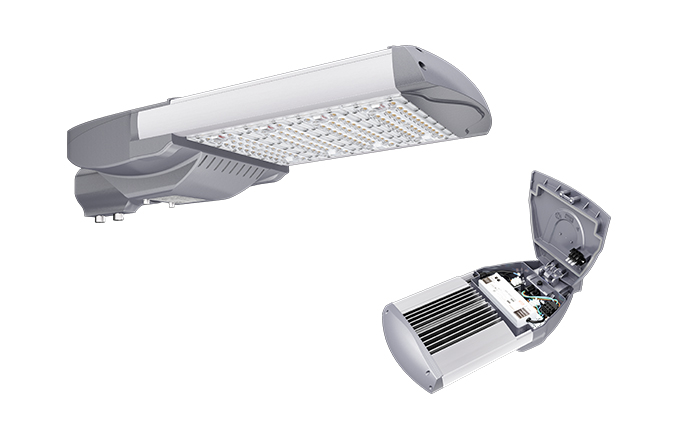
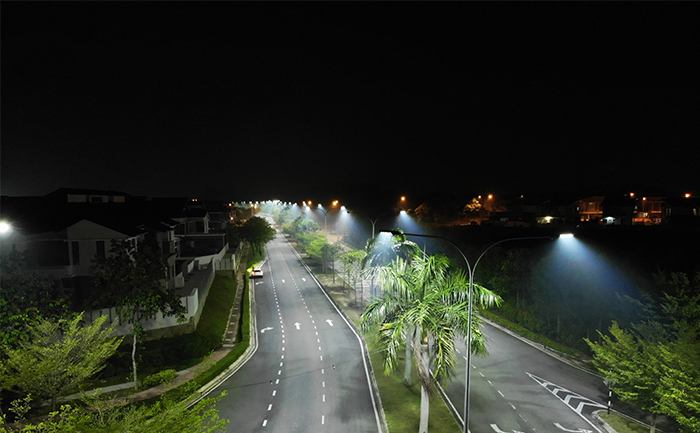
Height of street lights in parking lots
The height of street lights in parking lots varies greatly. Some are mounted on poles only 3-4 meters high, similar to those in residential areas, while others are mounted higher, reaching 8 meters or even taller. For smaller parking lots, those near office buildings, within industrial parks, and hospital parking lots, 3-4 meter tall streetlights are sufficient to illuminate the parking spaces and the roads within. However, for larger supermarkets, shopping malls, and specialized parking lots, the height of street lights needs to be higher. The recommended height is 8 meters, or a high mast is used, allowing a single pole to cover as many parking spaces and the roads within. For parking lots of moderate size, while specific considerations are needed, we generally recommend 6-8 meter poles with two streetlights back to back to illuminate more parking areas (ZGSM parking lot lighting solution) and save the cost of poles.
Height of street lights in rural roads and non-primary roads
For rural roads and some non-arterial roads, height of street light can be lowered appropriately. Generally, the height is 4-8 meters, with a recommended height of 6 meters. This allows for coverage of 3-5 meter-wide road surfaces while also increasing the spacing between light poles (25-30 meters). For pedestrian-only roads, height of street light can be lowered appropriately. The wattage of streetlights on these roads can also be reduced, as there are no high-speed vehicles and low pedestrian and vehicle traffic, so lighting requirements are not as high. However, road lighting in these areas requires careful consideration of the SR value (What’s SR in street lighting?), ensuring both sides of the road are illuminated to prevent accidents caused by unexpected pedestrians and vehicles. Furthermore, if there are many trees on either side, the light poles can be lowered or positioned away from them.
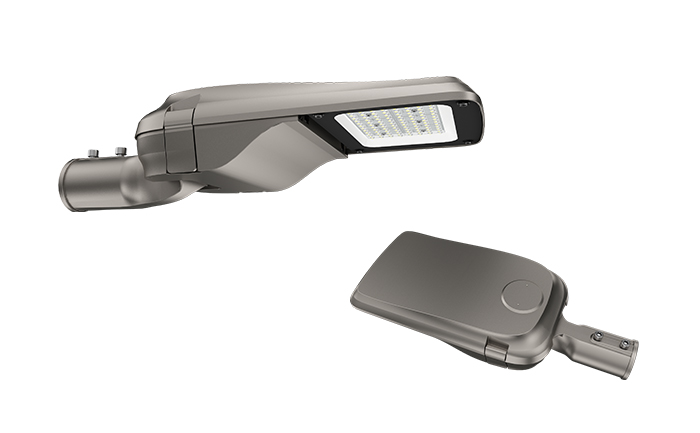
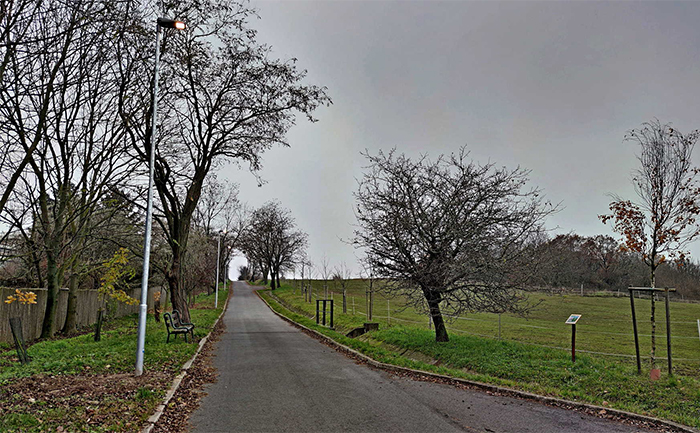
Other factors refer to height of street light
Light pole height (height of street light) is not only related to the wattage of the street lamps and the application scenario, but also to the light distribution of the lamps, the distance between the lamp poles, the road width, and the lighting standards. For example, the greater the distance between the lamp poles, the higher height of street lights is needed to cover the far ends of the two poles. Below we will explain each of these influencing factors one by one.
Light distribution of streetlights
Light distribution refers to the distribution of light emitted by a lamp within a solid angle. For street lamps, this can be understood as the distribution of light on the road surface. Light distribution of streetlights can be divided into two dimensions: lateral light distribution and vertical light distribution. Lateral light distribution refers to how the light from a fixture spreads across the street surface, affecting the width of the roadway covered by light from a lamppost at a given height. Vertical light distribution refers to how the light from a fixture spreads along both sides of the street, affecting how far light from a lamppost at a given height can reach. In other words, a more reasonable (wide) lateral light distribution allows a lamppost at a given height to illuminate more lanes. A more reasonable (wide) vertical light distribution allows a lamppost at a shorter height to illuminate areas further away from the lamppost. ZGSM conducted a lighting simulation on a road with an 8-meter height of street light, 30-meter lamp spacing, a 10.5-meter road width, and an M4a illumination level. The results showed that Type IIIM (What’s IESNA Type III light distribution?) achieved superior lighting performance compared to Type IIM. The reason is that the Type IIIM’s lateral light distribution is more suitable for situations with a higher width/height ratio. If a Type IIM must be used, simulations have shown that a 9-meter installation height or an appropriate adjustment of the tilt angle is appropriate.

Pole distance
In the previous section, we mentioned that vertical light distribution relates to how far to the sides the light emitted by a streetlight mounted on a given pole height can reach. For example, a Type IIM streetlight is more suitable for luminaire arrangements with larger pole spacing than a Type IIS streetlight. However, when the light distribution is consistent and the pole spacing is fixed, it is sometimes necessary to adjust the height of street light to cover the required illumination area. For example, a 6-meter pole may struggle to cover a 35-meter spacing. In this case, the pole height needs to be increased to prevent alternating light and dark areas on the road surface, otherwise the lighting uniformity (What’s lighting uniformity and how to improve it?) will be poor. ZGSM recommends a pole spacing of approximately four times the pole height. Increasing the pole height also requires increasing the lamp wattage to ensure compliance with EN13201 standards. This is because the illumination area covered by a streetlight changes, indicating a certain correlation between height and wattage. Similarly, when the pole spacing is closer, the height of street light and wattage can be appropriately reduced to avoid excessive brightness and energy waste.
Lighting classes (Ti)
The lighting level of street lighting is determined by many factors. If you’re interested in choosing the right lighting level for your street lighting, you can refer to this blog post – Dialux for street lighting design. Generally speaking, the higher the lighting level, the higher the wattage of the lamp. Because higher levels require higher brightness, the wattage of the lamp should also be higher at the same height. Furthermore, higher lighting levels also require higher uniformity (UI, U0), as well as glare (TI). Based on ZGSM’s years of experience, it’s necessary to appropriately increase the height of street light to meet these requirements. Below, we compare how the change in street lamp height (pole height) when switching from M4 to M2 fixtures, using the ZGSM Rifle series street lamps, can ensure the lighting solution meets the corresponding level requirements. Similarly, for sidewalk lighting, where uniformity and TI are less critical, a lower pole height can also be used to meet the corresponding lighting level requirements.

Other factors
The height of a light pole (or height of street light) is also influenced by other factors, such as the presence of trees, cost, and aesthetics. For example, in residential communities, urban lights must not only provide illumination but also take aesthetic considerations into account. Furthermore, in communities with high greenery, excessively high installation heights often result in light shining onto leaves and lawns. Therefore, for such applications, a lower pole is generally chosen. Although a lower pole means a smaller illuminated area, this approach is often the optimal choice for such applications. On roads, a taller pole means a larger illuminated area, but pole cost is also a significant consideration. Furthermore, maintaining a high pole often requires an aerial work platform, resulting in a high cost per installation. Similarly, if dense trees flank the road, a tall pole may not be a good option. We recommend using a conventional pole with a cantilever to keep the light fixture away from the trees, or placing the pole on an isolation island, which is a median arrangement. Below are different lighting simulation solutions of ZGSM, which also includes sports lighting, parking lot lighting, gas station lighting and high bay lighting, etc. Click for more information.
Summary
This article comprehensively explores the design considerations of streetlight height and its comprehensive impact on lighting performance. Height of street lights is a core design variable for roadway lighting systems. It directly impacts compliance with the illumination, uniformity, and glare control requirements of international lighting standards such as EN13201, thereby impacting road safety and comfort. Height must be tailored to the target application. For example, streetlights in residential areas and sidewalks are typically installed on lower poles, 3-6 meters in height, to avoid light encroachment and maintain aesthetics. However, arterial roads, highways, and large parking lots require taller poles, 8-12 meters in height, to achieve wider road coverage and reduce the number of poles. Height of street lights is also closely related to lamp wattage. Generally speaking, higher pole heights result in higher wattage. However, this relationship is not a simple linear one and requires comprehensive consideration of light distribution type, pole spacing, road width, and lighting class requirements (e.g., M1-M6 lighting classes). Environmental factors such as tree shading, ambient light interference, and aesthetics must also be factored into the design. ZGSM recommends using simulation (ZGSM lighting simulation) to determine the optimal streetlight height. In short, determining the height of street lamps is a multi-factor coupled decision-making process that requires a delicate balance between standard compliance, lighting coverage, economic costs and environmental constraints.
Related Products
Related Blogs
Related Cases
People also ask
Author introduction

Hello Customers,
My name is Taylor Gong, I’m the product manager of ZGSM Tech. I have been in the LED lights industry for more than 13 years. Good at lighting design, street light system configuration, and bidding technology support. Feel free to contact us. I’m happy to provide you with the best service and products.
Email: [email protected] | WhatsApp: +8615068758483

